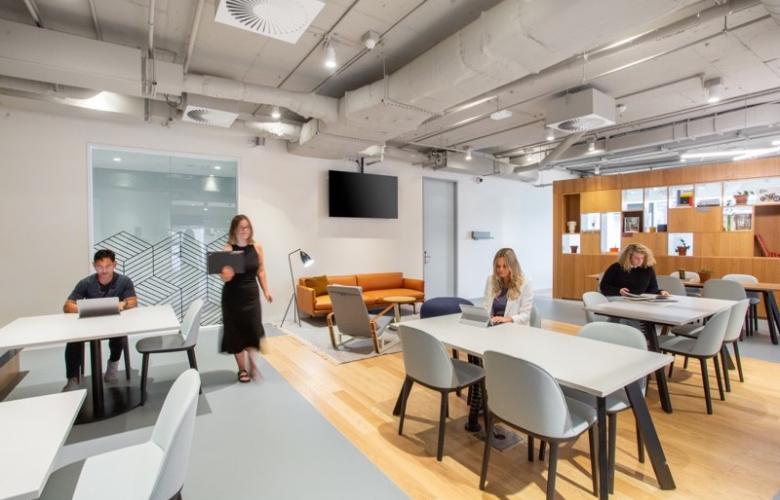Risky Business
Contact
Risky Business
If you’re thinking of opening your own flexible or hybrid workspace, tread carefully – success might not be as easy as you think.
As the prospect of a recession looms ever larger, businesses look to diversify their activi-ties in order to protect revenues. If new initiatives can be brought online swiftly and cost effectively then companies are not just protected from the financial storms, but may even be capable of expansion.
At first look, the flexible workspace sector seems to offer potential for this kind of initiative. A relatively small up-front investment plus a quick journey to market makes it appear that it is easy to open at least a few flexible workspaces ready to serve the growing demand from hybrid and flexible workers and their employers. Indeed, there’s a chance that such small beginnings can swiftly grow, leading to the creation of a complete new brand and product line.
However, before anyone starts investigating real estate possibilities, it’s time for a reality check. Creating successful work spaces is not straight-forward. Indeed, the flexible work-space industry presents a number of challenges which can mean expected business ob-jectives are not met and a well intentioned initiative quickly becomes a drain on re-sources.
Here’s three reasons why:
1: A Question of Scale
Hybrid and flexible workspaces are attractive because they offer users a choice. A choice of location, a choice of spaces, a choice of times and ways to engage with the working environment. To be able to offer this choice you need to have a range of spaces. Small, large, short-term, medium-term…. Put simply, a single site isn’t going to make it happen.
The new hybrid working models cannot be treated as add-ons or after-thoughts. They need dedicated spaces committed to creating the right environment and using the tech-nology required by flexible and hybrid workers. It is difficult to realise this if the space is, in reality, a secondary concern within an otherwise traditional workspace.
Even within a single company the most effective hybrid working model provides workers with diverse locations from where they can work. This means finding a variety of locations for those offices, places which are attractive and easily accessible – located somewhere which will reduce the stress and environmental impact of the worker’s commute, for ex-ample. Again, a single location, and particularly one which is already in use as a tradi-tional office, will not offer this alternative.
2: Organisational Management
If the above challenge is met what emerges is a business which requires a constant and high level of management. The workspace will only be successful if it delivers a high quality user experience from start to finish. That means ensuring everything runs smooth-ly, from administration and contract agreements through to buildings maintenance and facilities provided on site.
Don’t forget, providers in the workspace sector aren’t just competing on price, but also on the standard of facilities. The reception service, refreshments, socialising and breakout spaces are extremely important for users and if they’re provided in one office location they will be expected to be replicated in all others.
Even if you decide to go for a basic approach to your provision, as a leaseholder you will be responsible for what happens throughout the building. As such the cost and manpow-er required for maintaining the location can escalate significantly and in a very short time.
3: Marketing and Brand
Once you’re happy with all of the above there’s one last challenge – getting people through the door. Despite the rise in demand for hybrid solutions employees still have the right to vote with their feet. Indeed, just because an employer pays to provide access to a location doesn’t automatically mean their employees will flock there. If it’s not attractive for an individual they may well decide to stay at home.
Again, a brand and marketing strategy is unlikely to be sustainable or even affordable if it is to cover a few offices or just a single location. Indeed, a brand approach might not even be appropriate if there aren't significant locations or products available.
Overall, creating a hybrid office space is not as simple as it may first appear. Without sig-nificant investment or a clear understanding of what is involved, the cost of opening, run-ning and promoting a location can quickly build and far outstretch any revenue gained. Even if a business has potential locations ready for conversion, and even if there is an ambition for diversification, it may be better to consider other options which satisfy these ambitions more easily.
To find out how more about how we make flexible workspace work for everyone please get in touch.
Related Reading:
What do tenants want from the workspace of today?
Why Hybrid Clients Are Thinking Outside The Box
Current Work Trends : What Franchise Operators and Landlords Need To Know
Flexspace Benefits any Business... and any Property | Commo.
Current Work Trends : What Franchise Operators and Landlords Need To Know | Commo.
The Role of Franchise Operators and Landlords in the Future of Flexspace
Suburban rejuvenation. New places for workplaces. New opportunities for landlords.





